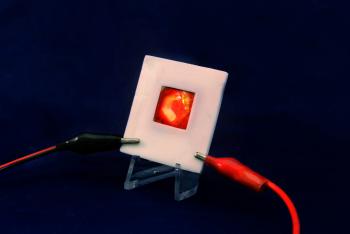Graphene and paper used to create a foldable, unique display
Researchers from Turkey demonstrated a display prototype that is printed on paper (using graphene inks). This was a very simple device, but potentially such a technology could be used to create a foldable display with interesting optoelectronic properties.

To create this display, the researchers used electro-modulation of the optical properties of the multilayer graphene via blocking the interband electronic transitions. The researcher report that the paper display has high optical contrast and a fast response time.







